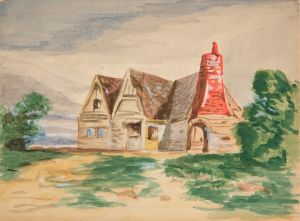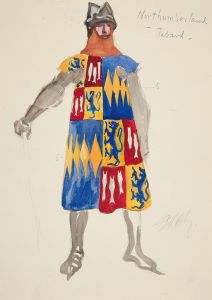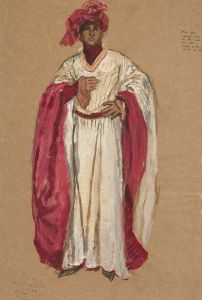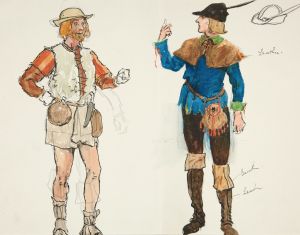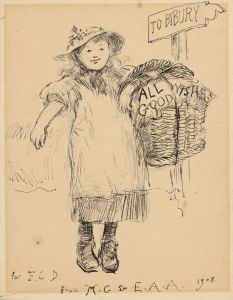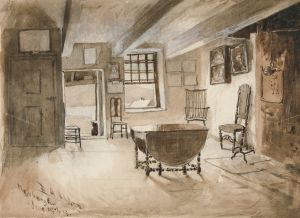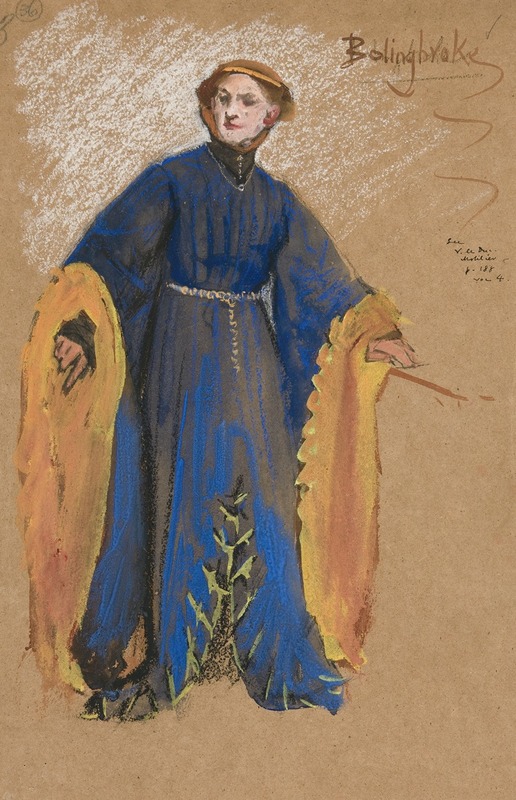
Bolingbroke, costume sketch for King Richard II
A hand-painted replica of Edwin Austin Abbey’s masterpiece Bolingbroke, costume sketch for King Richard II, meticulously crafted by professional artists to capture the true essence of the original. Each piece is created with museum-quality canvas and rare mineral pigments, carefully painted by experienced artists with delicate brushstrokes and rich, layered colors to perfectly recreate the texture of the original artwork. Unlike machine-printed reproductions, this hand-painted version brings the painting to life, infused with the artist’s emotions and skill in every stroke. Whether for personal collection or home decoration, it instantly elevates the artistic atmosphere of any space.
Edwin Austin Abbey was an American artist known for his illustrations and paintings, particularly those depicting scenes from literature and history. One of his notable works is the costume sketch for the character Bolingbroke in William Shakespeare's play "King Richard II." This sketch is part of Abbey's extensive work on Shakespearean subjects, which he pursued with great enthusiasm and meticulous attention to historical detail.
Abbey was born in Philadelphia in 1852 and began his career as an illustrator for magazines such as Harper's Weekly. His interest in historical and literary themes led him to move to England in 1878, where he became deeply involved in the British art scene. Abbey's fascination with Shakespeare's plays was evident in his numerous illustrations and paintings based on the Bard's works. His dedication to authenticity and historical accuracy was a hallmark of his artistic process.
The costume sketch for Bolingbroke is a testament to Abbey's commitment to capturing the essence of Shakespeare's characters. Bolingbroke, later known as King Henry IV, is a central figure in "King Richard II," a play that explores themes of power, legitimacy, and the divine right of kings. Abbey's sketch likely reflects the historical period of the late 14th century, when the events of the play are set. His attention to detail in costume design would have been informed by his research into the clothing and armor of the era.
Abbey's work on Shakespearean subjects was not limited to sketches. He also produced large-scale paintings and murals, including a series for the Boston Public Library depicting scenes from the "Quest for the Holy Grail." His ability to convey the drama and emotion of Shakespeare's plays through visual art earned him acclaim both in the United States and the United Kingdom.
The costume sketch for Bolingbroke would have been part of Abbey's broader project to illustrate "King Richard II." This project was likely intended to accompany a published edition of the play or to serve as a visual aid for theatrical productions. Abbey's illustrations often served to enhance the reader's or viewer's understanding of the text, providing a visual context that complemented Shakespeare's language.
Abbey's contributions to the art world were recognized during his lifetime, and he was elected to the Royal Academy in London in 1898. His work continues to be appreciated for its historical accuracy and artistic merit. The costume sketch for Bolingbroke, like many of Abbey's works, remains a valuable resource for those interested in the intersection of art, history, and literature.
In summary, Edwin Austin Abbey's costume sketch for Bolingbroke in "King Richard II" is a reflection of his dedication to historical accuracy and his passion for Shakespearean drama. Through his detailed and informed approach, Abbey brought to life the characters and settings of one of Shakespeare's most compelling historical plays.






